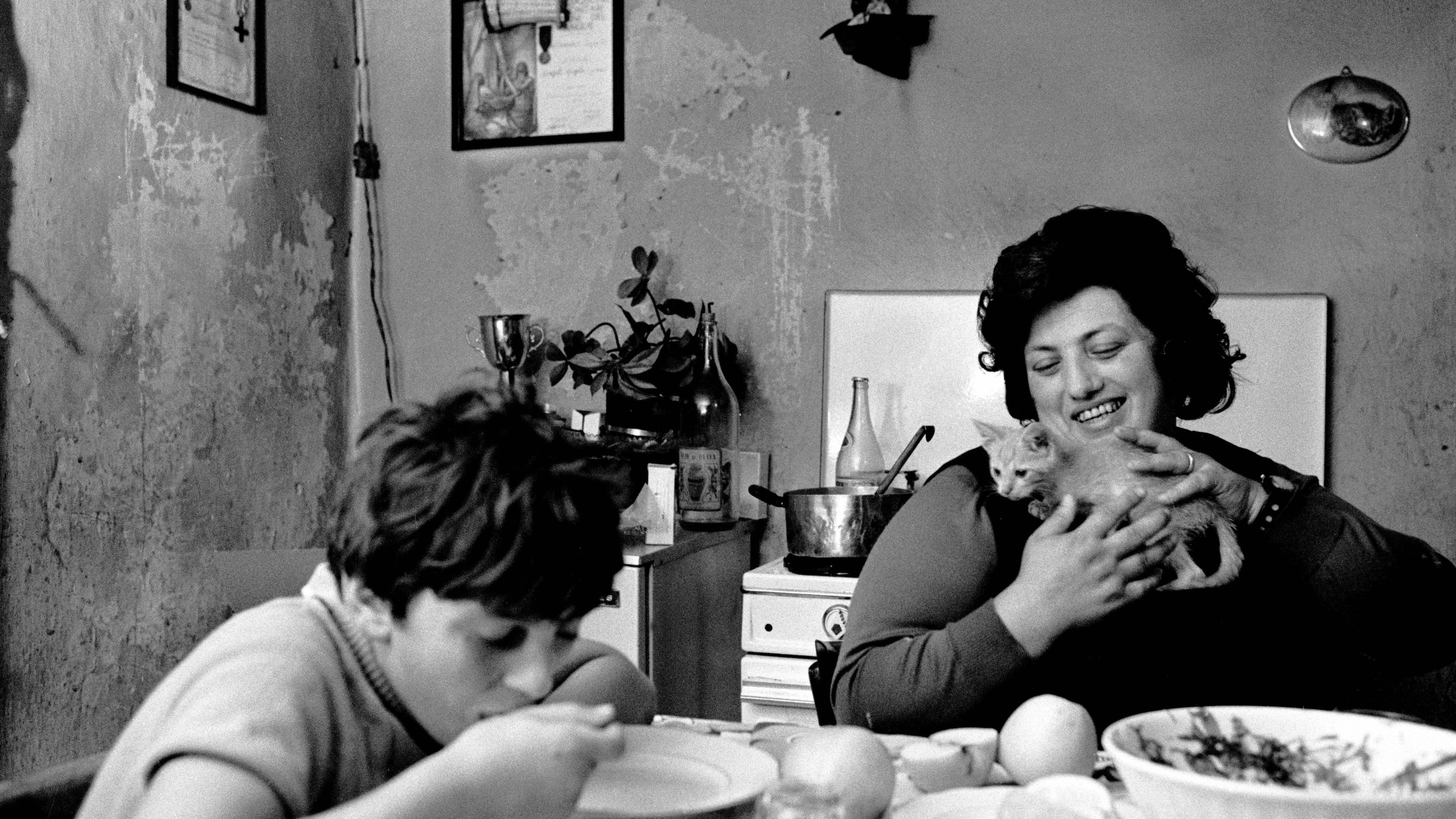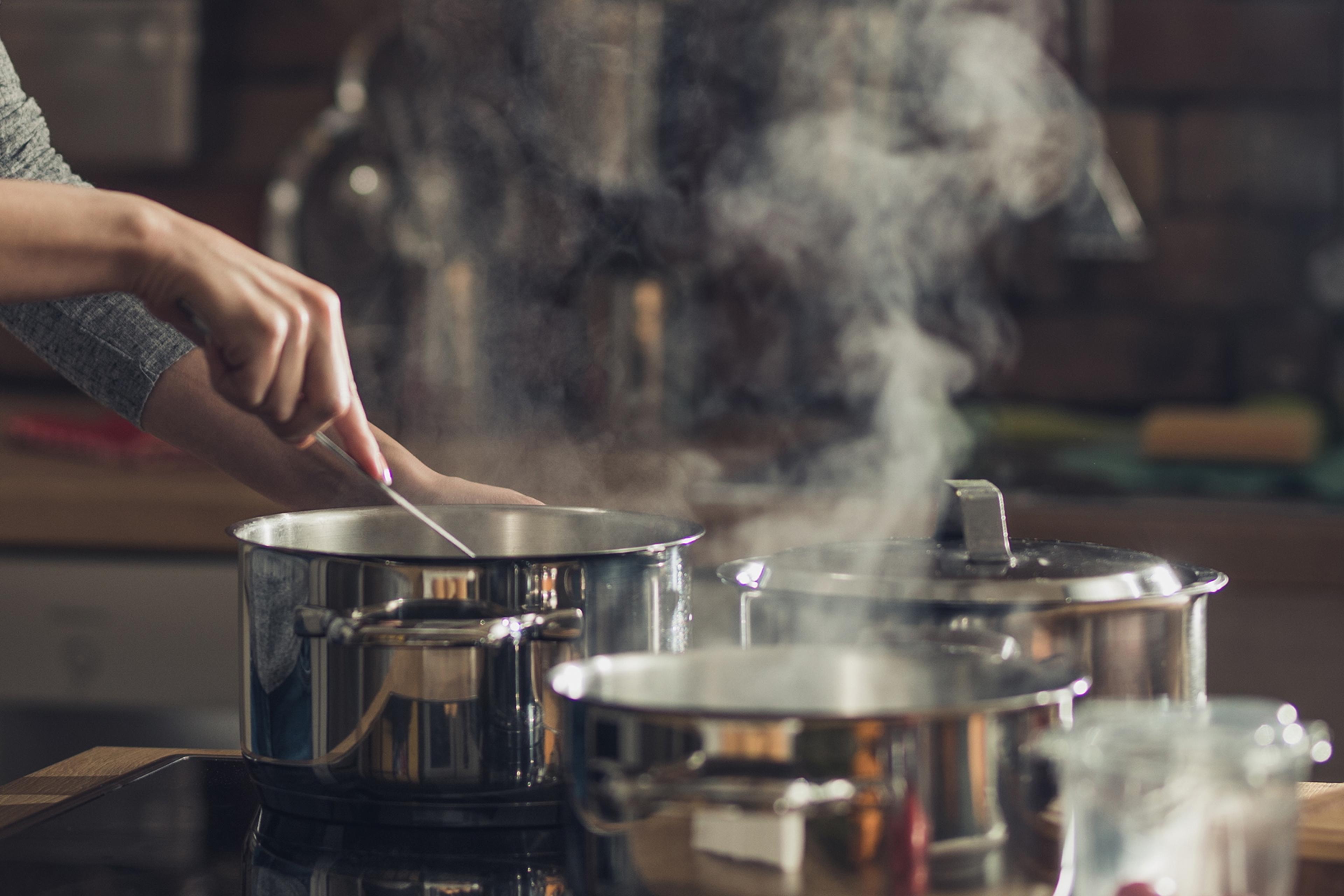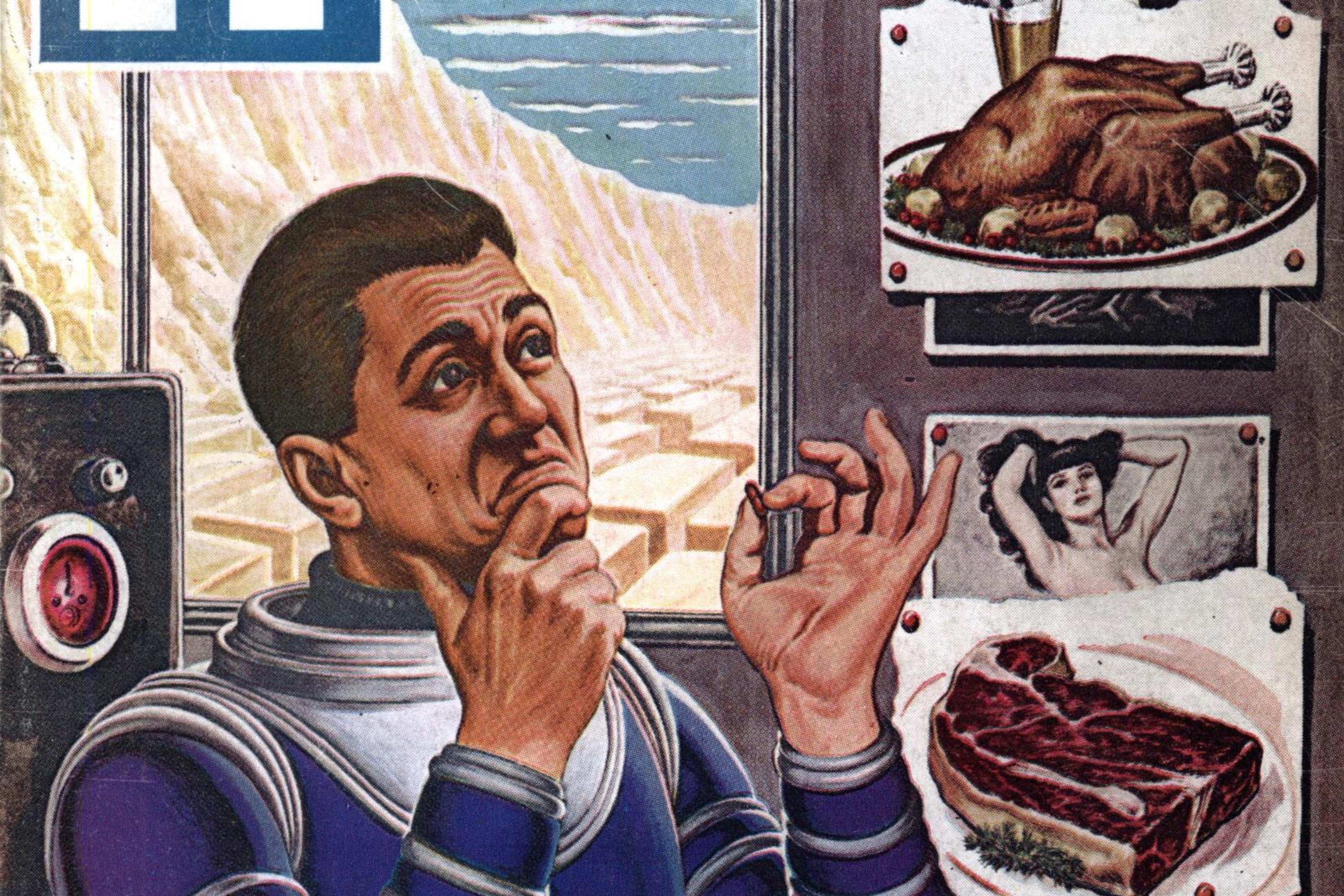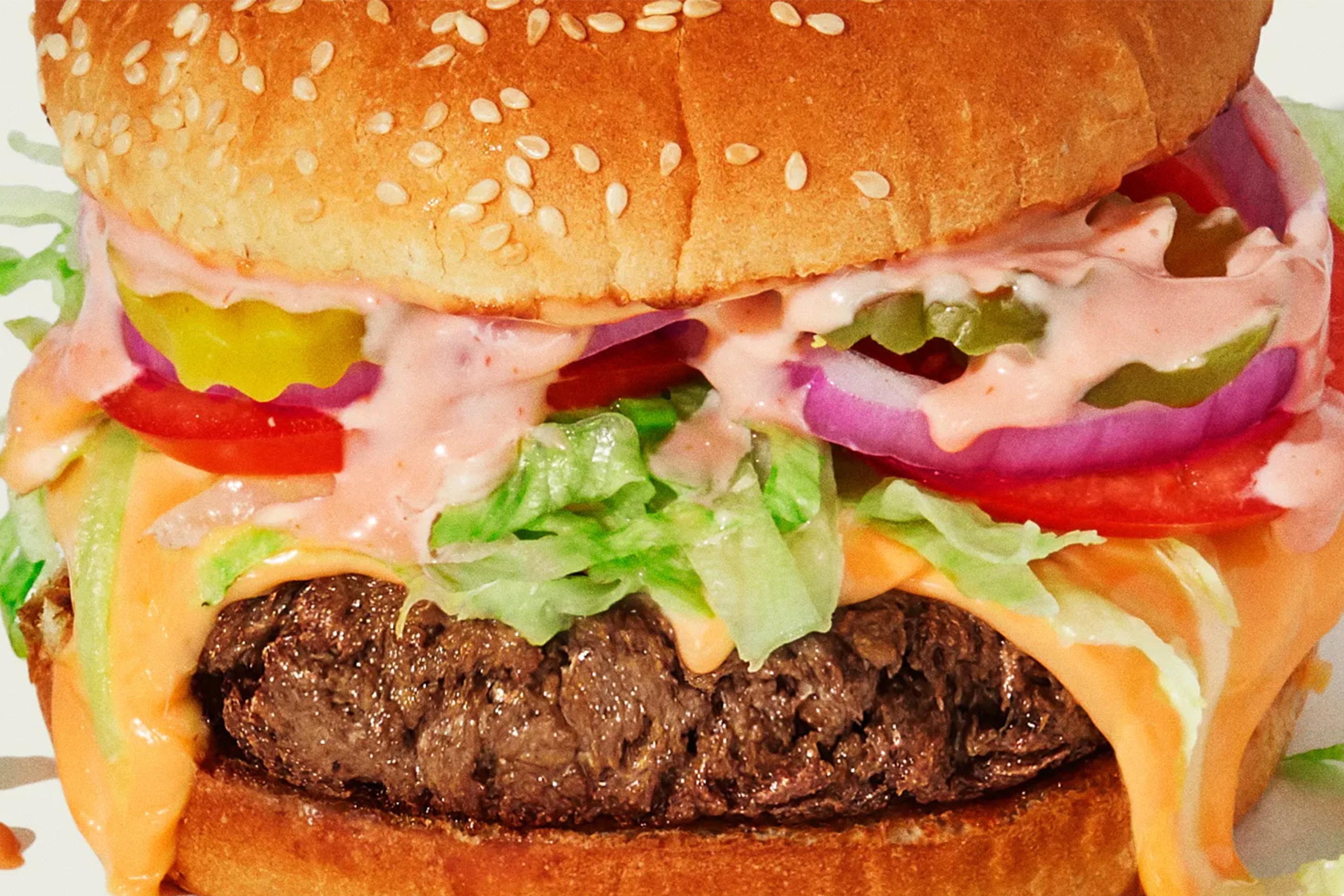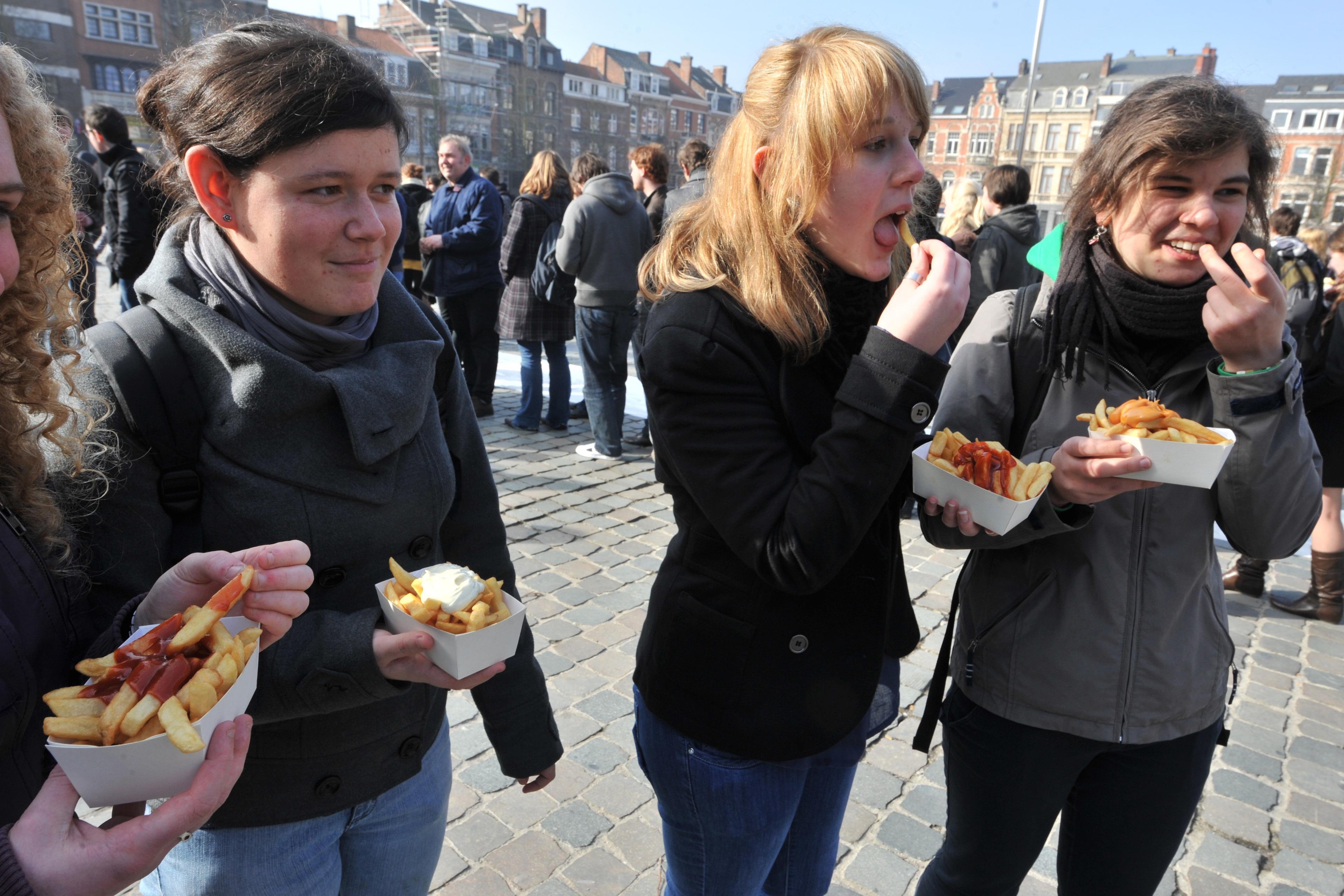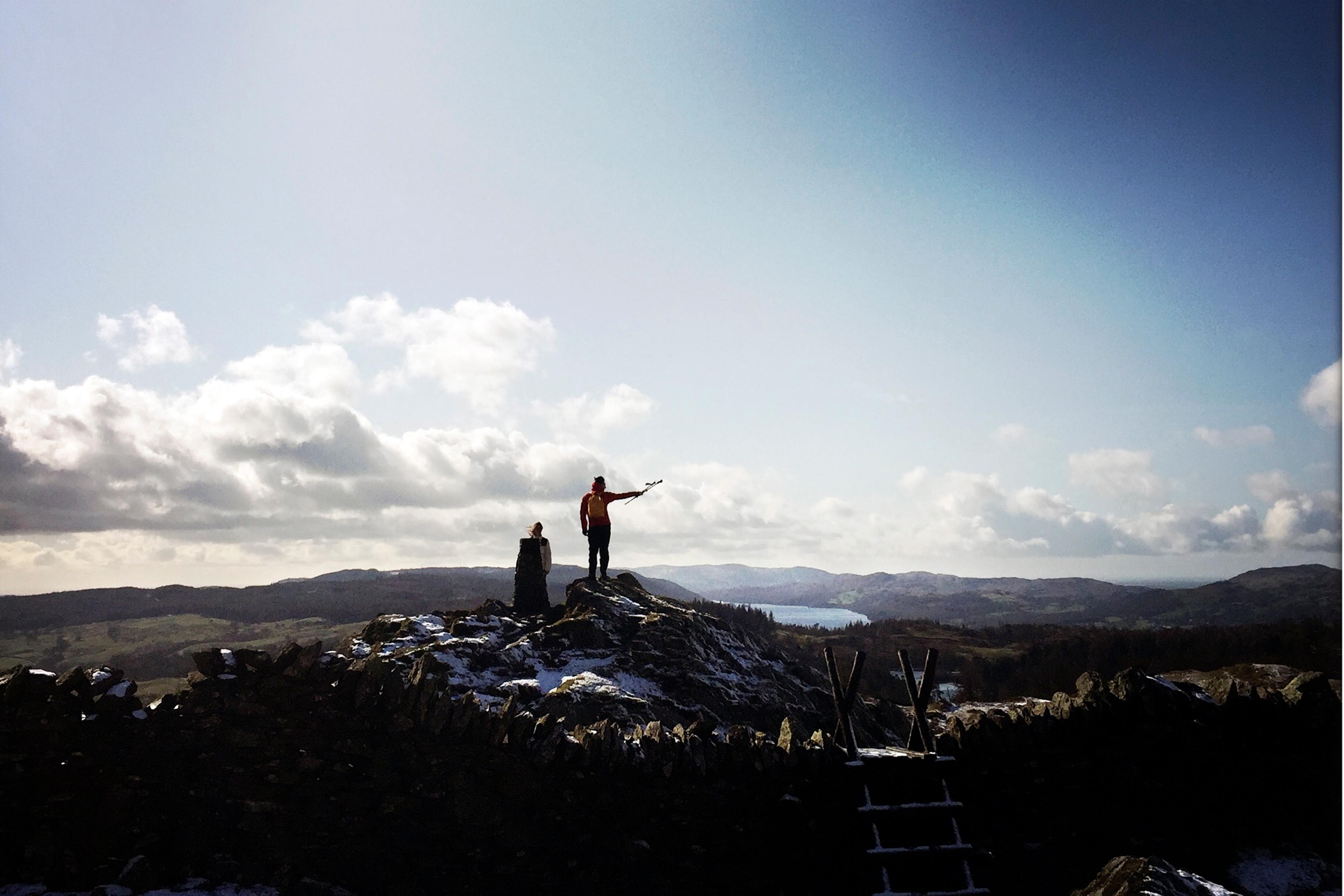Ours was not a typical Italian Canadian household. We didn’t live to eat, we ate to live. My parents had emigrated in the 1950s to Canada from Scotland, where they had grown up as children of Italian immigrants. They brought several cultural influences to their new home. While we certainly ate Italian food – pasta with homemade sauce being a staple – our meals included Scottish fare like black pudding, kippers, turnips, potatoes and store-bought pork pies. As if they could not shake off the effects of the Depression and war years, my parents’ frugality not only guided their choices at the grocery store, but how much our family of four consumed at the table.
‘Frugal’ comes from the Latin fruges, the plural of frux, or ‘fruit, resource’. The ancient Romans knew a thing or two about eating frugally (the myth of the vomitorium aside), subsisting largely on plant-based diets. Frugality connoted virtue, restraint, civility. A barbarian was anyone, particularly a foreigner, lacking those attributes.
As recently as the mid-20th century, Italians continued these foodways – though motivated by neither self-control nor xenophobia but by limited resources. They now refer to those recipes as la cucina povera, or the cuisine of the poor.
In these times of heightened awareness of food waste, the carbon-intensive cost of industrial agriculture, and the globalisation of the human food-supply chain – all thrown into greater relief by the rising cost of food in the past year – a new look at what is on the plate seems more pressing than ever. Turning to the past might help us go forward.
All peoples, throughout history, have experienced food insecurity and outright famine; in fact, prolonged periods of plenty are a relatively new phenomenon, even in industrialised countries. So people have adapted. Few cultures, however, have compiled a list of making-do recipes quite as delicious as the Italians. Generations of home cooks have been creative and resourceful in the face of frequent scarcity. Necessità fa la virtù – ‘Need gives rise to virtue.’
Italy has been blessed by nature. The long, narrow Mediterranean country boasts a range of terrestrial, freshwater and marine ecosystems with a favourable climatic range. Compared with many other countries, food options are therefore numerous – at least in theory: but politics and other human interferences in the supply chain can lead to malnutrition anywhere, fertile or not. And population density complicates the situation further. Until the early 21st century, when the country’s birthrate precipitously declined, the average Italian couple might have more than eight children, sometimes as many as 21. The high emigration rate at the turn of the 20th century, to places like the United States, is no surprise.
Ordinary poverty – low cash combined with scarcity – may have enforced ingenuity on Italian cooks over the generations, but it was not the sole influence on dietary decision-making. A significant example is the salt tax imposed by the pope in the 16th century, which had long-term consequences for that Italian staple, bread. Lacking salt, bread had to be eaten the day it was baked. Leftovers – which became stale very quickly, due to the loss of moisture – became the basis of several simple, but delicious dishes, again attesting to the parsimony and inventiveness of la nonna (or grandma). They include panzanella (bread salad), pappa al pomodoro (Tuscan tomato-bread soup) or ribollita (Tuscan bean soup).
Whether they live in Italy or anywhere else, people with food insecurity feed themselves roughly the same way. They use what they can find easily and cheaply (from stores, and in the pantry, garden or wild areas). They waste nothing, and repurpose any leftovers. They fill bellies by whatever means possible – usually by expanding the carbohydrate portion of the meal, and/or adding copious liquids.
In la cucina povera, many plant-based soups and pasta dishes fulfil all these criteria. They combine tomatoes, herbs, wild greens, peas and beans, olive oil, cheese and, of course, wheat (as pasta or bread). Where or when wheat is scarce, cornmeal, farro (an ancient whole grain) and rice can fill the plate. And when even those are missing, wild chestnut flour can be fashioned into sweet pancakes or tortes. From these humble beginnings we have such essentials of Italian cuisine as risotto and polenta, variations of which can run the gamut from extremely plain (dressed with olive oil or a light tomato sauce and a tiny bit of grated cheese) to positively indulgent.
Indeed, the current fare at authentic Italian restaurants features many dishes from la cucina povera, all delicious, easy on the eyes, and usually inexpensive to source. Still, it should be noted that chefs typically add more meat, cream, salt and oil than their grandmothers could ever dream about. Today’s diners have higher expectations, and much deeper pockets.
For the typical nonna, cooking for her family in tough times, true culinary magic occurred only when love, ingenuity and scarcity collided. The fact that for many older people those simple meals inspire la nostalghia, and constitute the very best form of comfort food, attests to the power of less – in the right hands.
La cucina povera is all about making do with what you have. You need to be on the alert all the time for maximising your ingredients. You cannot depend on the contents of a pantry. The orto, or home garden, is a given. Turn to the wild for greens and fragrant herbs, and base many meals on local varieties of legumes (pulses) for protein and fibre. In some regions, the garden pea will grace dishes such as risi e bisi, while in several others, the chickpea is king. Additionally, the chickpea’s thick soaking water, aquafaba, can be used as an egg substitute, among other things.
Italian cuisine, in general, while far from being vegetarian, does not rely heavily on meat of any kind. The meat-centred dishes that do exist, at home or abroad, tend to reflect greater economic status, especially when they use large portions of beef or veal. What characterises la cucina povera is not only its sparingly used animal protein, but an open mind regarding its origins.
In his unique book about underutilised protein sources, Unmentionable Cuisine (1979), Calvin Schwabe urges people in places like the US to consume both the animal species and the animal parts that other cultures eat with great gusto. He covers everything from amphibians to calf brains. Although the book is more than 40 years old, its central argument – that perfectly good protein, fit for human consumption, should not go to waste – holds to this day. (Though it should come with a contemporary warning about at-risk species such as sharks and songbirds.)
In la cucina povera, scrupulous home economics valued offal – parts of livestock that might be ordinarily discarded, also called quinto quarto, or ‘fifth quarter’, what remains after the carcass is butchered into four sections before carving it up. No hungry contadino in his right mind would have turned down a tasty dish of pig livers, spleen or blood pudding, and many better-off Italians still enjoy a wide variety of organ meats.
In the past two decades or so, this kind of nose-to-tail dining has gained some traction among hipsters and advocates of the no-waste movement. Applying the old expression ‘everything but the squeal’ to birds and beasts of the farm and stockyard, and occasionally the forest, this practice finds delicious uses for the internal organs, and even hooves and ears, body parts often tossed to the dog-food factory or landfill for being beneath human standards. Little do many contemporary American diners know, as they tuck into a Michelin-starred plate of Tuscan trippa alla fiorentina (Florentine tripe) that some clever peasant beat them to the idea of eating cow stomach by centuries.
In la cucina povera, all sorts of farm animals, including horses and goats, went into the pot when no longer able to act as beasts of burden, or as producers of milk or eggs. Meat came more reliably from hunting trips through fields, forests, rivers and coastlines. A combination of curiosity, bravery and creativity yielded some fine eating. To this day, menus in many central and northern regions, such as Tuscany and Veneto, feature wild rabbit and hare, quail, songbirds, lampreys and frogs, as well as the more familiar molluscs (eg, clams, octopus) and crustaceans. About the only animal groups not represented are insects and arachnids (scorpions and spiders). While entomophagy exists all over the world, and even in adjacent countries like France, there is no evidence that Italians have ever accepted insects as a protein source. Of course, that could change.
It is no wonder that the Slow Food movement, founded in 1986 by Carlo Petrini, began in Italy. It clearly lifts many of its principles from la cucina povera, with an additional emphasis not only on what’s being eaten, but how. Thus, as well as avoiding waste, and insisting on the local and the seasonal, Slow Food celebrates the convivium: dining with others. This habit is a mainstay of an omnivorous animal such as Homo sapiens. Not only is it safer to eat with people we trust, it is more fun. With Slow Food, it is elevated to the sacred.
Slow Food recipes can, as the name suggests, take time to prepare (at least when compared with assembly-line cooking or home microwaving). They typically require a lengthy list of ingredients, many, such as artisanal cheese, out of the range of the budget-conscious. So it is not, strictly speaking, a frugal diet, even if it fulfils many ecologically sensitive criteria, such as the prioritisation of local fare. The latter benefits food producers of all kinds, along the entire production line ending at the table. It means cocking a snook at globalisation; and maybe the trade of perishable foods across hundreds or thousands of miles has had its day, anyway. It should not have taken the higher costs of transportation, the threat of climate disruption, not to mention rising rates of species extinction, to wake us up to these hard truths. But humans do have a weakness for abundance at any price.
Being aware of our proclivities is a start. Whatever the future brings, and wherever our food comes from, it can hardly hurt to slow down, eat simply, and savour whatever we have the fortune to feature on the plate.
